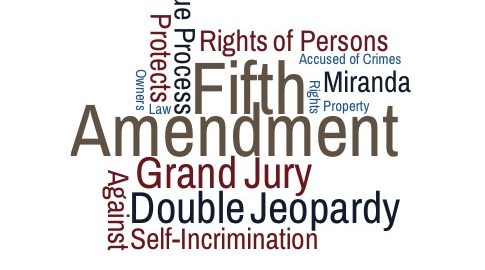Miranda v. Arizona
86 S.Ct 1602
US Supreme Court
Decided June 13, 1966
Throw-Back-Thursdays wouldn’t be complete without this great Supreme Court classic: The most recognizable legal incantation known throughout the country: “You have the right to remain silent. Anything you say can and will be used against you in a court of law. You have the right to an attorney.” derives from the landmark case known as Miranda v. Arizona. It is so often repeated on television, in the movies, and in real life that it has become part of our culture. The right not to incriminate oneself (often referred to as the right to remain silent) stems from the Fifth Amendment to our Constitution. But how and when were law enforcement officers required to recite the Miranda warnings to arrestees? The birth of the iconic Miranda rights dates back to 1966, when the Supreme Court made a landmark decision in Miranda v. Arizona.
Ernesto Miranda and the Story Behind the Miranda Rights
Three years prior to the Supreme Court’s decision, Ernesto Miranda was arrested in Phoenix, Arizona after law enforcement connected him to a kidnapping and rape. The officers questioned him for two hours until Miranda signed a confession. Miranda was never informed of his Sixth Amendment right to an attorney, nor was he informed of the Fifth Amendment’s protection against self-incrimination.
At trial, Miranda’s lawyer, Alvin Moore, objected when prosecutors attempted to offer his written confession as evidence. Moore argued that Miranda’s confession could not have been voluntary because he was never informed of his rights and that the confession should be precluded from being introduced as evidence. The judge overruled Moore’s objection and Miranda was convicted of the rape and kidnapping charges. Moore appealed to the Arizona Supreme Court but the conviction was affirmed. The Arizona Supreme Court’s decision relied heavily on the notion that Miranda did not take the initiative to request an attorney himself.
The Decision of the U.S. Supreme Court
Justice Earl Warren delivered the 5-4 majority opinion, with Justices Harlan and White dissenting and Justice Clark concurring and dissenting in part. The Court ruled that the prosecution may not use statements made by an individual during custodial interrogation unless certain safeguards were followed. This decision guaranteed that individuals received notice that they had a right, under the Fifth Amendment, against self-incrimination—a notice that became known as Miranda warnings.
Throughout the decision, the Court highlighted the importance of the Fifth Amendment right against self-incrimination, noting that “the current practice of incommunicado interrogation is at odds with one of our Nation’s most cherished principles—that the individual may not incriminate himself.” Another crucial observation made by the Court was that police officers have the advantage during custodial interrogation and that the liberty of the individual being interrogated is often compromised because of this position of power.
Previously, courts had to decide whether defendants understood their constitutional rights on a case-by-case basis. Because the right against self-incrimination was so essential to the justice system, the Court held that this methodology was not enough. In an effort ensure all defendants understand their fundamental constitutional rights upon being arrested and before being interrogated in custody, the Supreme Court held that police must make defendants aware of these rights. From that point on, law enforcement was required to warn defendants of the following: 1) the right to remain silent; 2) that anything they say may be used against them in court; 3) the right to an attorney, either retained by them or appointed by the court; and 4) that they may waive these rights, but they retain the right to ask for an attorney any time during the interrogation, at which point the interrogation can only continue in the presence of a lawyer.
Notably, this decision was quite controversial, which isn’t surprising considering the 5-4 split. Those who criticized the decision argued that the new guidelines would weaken law enforcement’s ability to catch criminals. Even as late as 2000, the Supreme Court was given the opportunity to overrule Miranda v. Arizona, but the majority concluded that the Miranda warnings have “become part of our national culture” and refused to overrule the decision.
